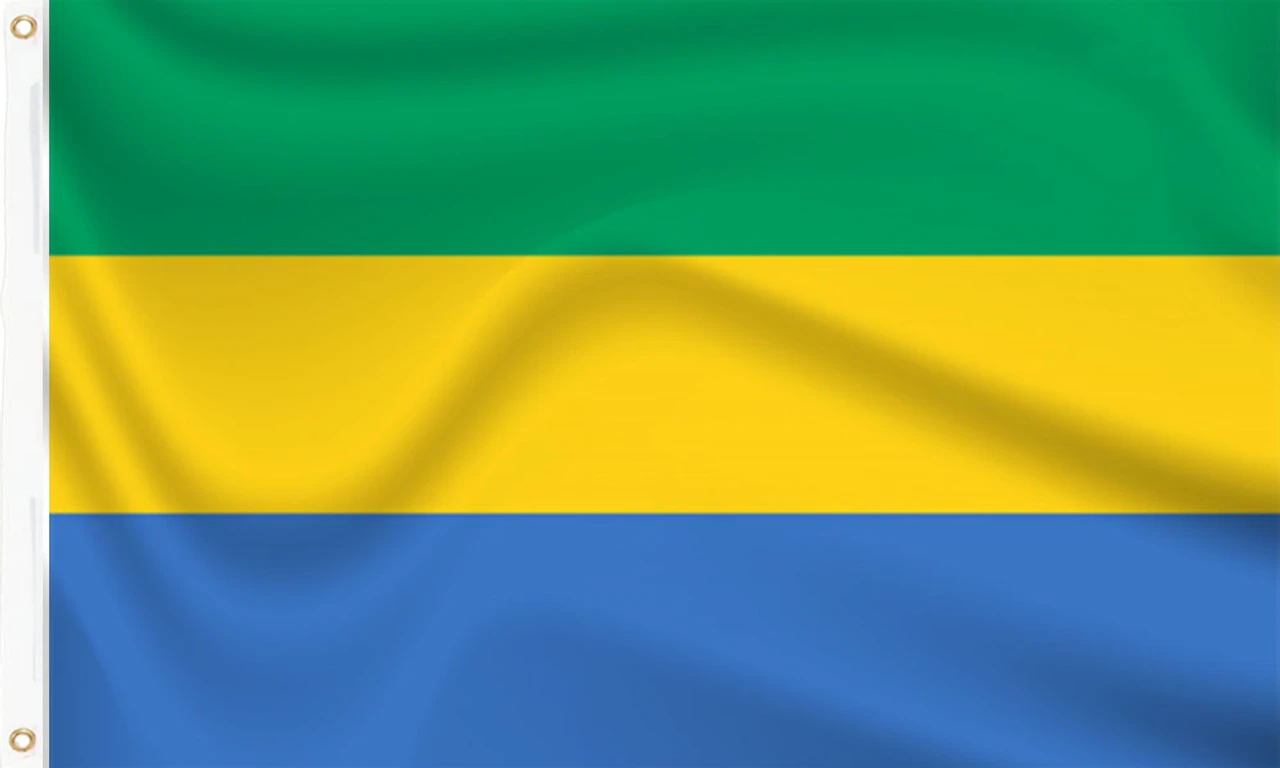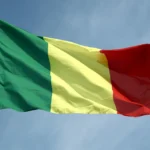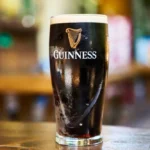
Gabon, a country located on the west coast of Central Africa, is known for its rich natural resources, diverse culture, and significant historical milestones. From its extensive coastline along the Atlantic Ocean to its vibrant traditional music and major rivers like the Ogooué, Gabon offers a unique blend of natural beauty and cultural heritage. The country’s economic landscape, symbolized by its national animal, the African gray parrot, and its first president, Léon M’ba, reflects its evolution and ongoing development. Here are some intriguing and verified facts about Gabon that highlight its geographical, cultural, and historical significance.
Capital City: Libreville serves as the capital and largest city of Gabon, established in 1849 by freed slaves from the United States. It is situated along the Atlantic coast and has developed into the political, economic, and cultural center of the country. The city is known for its vibrant markets, colonial architecture, and coastal beaches, making it a hub for both residents and tourists. Libreville’s population exceeds 700,000, contributing significantly to Gabon’s urban landscape and serving as a gateway for international trade and commerce.
Area: Gabon covers an area of approximately 267,668 square kilometers (103,347 square miles), making it one of the larger countries in Central Africa. The country is characterized by its diverse landscapes, which include coastal plains, savannahs, and dense tropical rainforests. This vast area is rich in biodiversity, housing a variety of flora and fauna, and is often referred to as a biodiversity hotspot. Gabon’s size allows for significant ecological diversity, which is protected in numerous national parks.
Population: As of 2021, Gabon has an estimated population of around 2.3 million people, with a growth rate that reflects a youthful demographic. The population is concentrated in urban areas, particularly in Libreville, while rural communities maintain traditional lifestyles. Gabon is ethnically diverse, with over 40 different ethnic groups, each contributing to the country’s rich cultural tapestry. This demographic diversity is reflected in local languages, traditions, and customs practiced across various regions.
Official Language: French is the official language of Gabon, a remnant of its colonial past when it was part of French Equatorial Africa. It is used in government, education, and media, facilitating communication in a country where multiple indigenous languages are spoken. Approximately 80% of the population speaks one of the national languages, such as Fang, Myene, or Nzebi, alongside French. This bilingualism enriches Gabon’s cultural identity and reflects its historical influences.
Currency: The currency used in Gabon is the Central African CFA franc (XAF), which is shared among several Central African nations. The CFA franc is pegged to the euro, providing a level of economic stability for Gabon. The use of this currency facilitates trade and economic activities within the region, allowing for easier transactions among member countries of the Economic and Monetary Community of Central Africa (CEMAC). Gabon’s economy heavily relies on oil exports, which are priced in CFA francs.
Independence: Gabon gained independence from France on August 16, 1960, marking a significant turning point in its history. The transition to independence was part of a broader wave of decolonization across Africa during the mid-20th century. Following independence, Léon M’ba became the first president, leading the nation through its early years of self-governance. This date is celebrated annually as Gabon’s National Day, commemorating the country’s sovereignty and the struggle for self-determination.
Highest Point: The highest point in Gabon is Mount Iboundji, which stands at 1,575 meters (5,169 feet) above sea level. Located in the eastern part of the country, this mountain is part of the Chaillu Massif, an area known for its rugged terrain and rich biodiversity. Mount Iboundji is not only significant for its elevation but also for its ecological importance, as it provides habitat for various species and contributes to the region’s hydrology. The mountain’s elevation offers stunning views of the surrounding landscapes, attracting hikers and nature enthusiasts.
Largest City: Libreville, the capital, is not only the political heart of Gabon but also its largest city, with a population exceeding 700,000 residents. The city is a melting pot of cultures, reflecting the diverse ethnic groups that inhabit the country. Libreville’s economy is driven by trade, services, and the oil industry, making it a vital economic center. The city features a mix of modern infrastructure and traditional markets, showcasing Gabon’s cultural heritage alongside contemporary urban development.
Biodiversity: Gabon is renowned for its remarkable biodiversity, boasting 13 national parks that cover about 10% of its land area. These parks are home to a wide array of wildlife, including critically endangered species such as the western lowland gorilla and African forest elephants. The government has made significant efforts to protect these natural habitats, promoting eco-tourism and conservation initiatives. Gabon’s commitment to preserving its unique ecosystems contributes to global biodiversity and attracts researchers and nature lovers alike.
Oil Production: Gabon is one of Africa’s largest oil producers, with oil accounting for more than 80% of its exports. The discovery of oil in the 1950s transformed Gabon’s economy, leading to rapid economic growth and development. The oil sector has attracted significant foreign investment, primarily from multinational corporations, which has further bolstered the country’s infrastructure and services. However, reliance on oil has also made Gabon vulnerable to fluctuations in global oil prices, prompting the government to explore diversification strategies. The revenues generated from oil production play a crucial role in funding public services and infrastructure projects, shaping the economic landscape of Gabon.
Forest Coverage: Approximately 88% of Gabon is covered by rainforest, making it one of the most forested countries in the world. This extensive forest area is part of the Congo Basin, which is the second-largest tropical rainforest in the world after the Amazon. Gabon’s forests are home to an incredible diversity of plant and animal species, including many that are endemic to the region. The government has implemented conservation measures to protect these vital ecosystems, recognizing their importance for climate regulation, biodiversity, and the livelihoods of local communities.
Wildlife: Gabon is known for its rich wildlife, which includes iconic species such as the critically endangered western lowland gorilla and African forest elephants. The country’s national parks provide crucial habitats for these animals, and Gabon is often referred to as a biodiversity hotspot due to its unique ecosystems. Conservation efforts, including anti-poaching initiatives and community engagement, are in place to protect these species and their habitats. Gabon’s commitment to wildlife preservation has made it a key destination for eco-tourism, attracting researchers and nature enthusiasts from around the globe.
Life Expectancy: The average life expectancy in Gabon is approximately 67 years, reflecting improvements in healthcare and living standards over recent decades. However, disparities exist between urban and rural areas, with urban populations generally enjoying better access to medical facilities and services. Factors such as infectious diseases, maternal health, and nutrition impact life expectancy in the country. The Gabonese government has focused on health initiatives to address these challenges, aiming to improve overall health outcomes for its citizens.
Literacy Rate: The literacy rate in Gabon is about 85.5% as of recent estimates, indicating a relatively high level of education compared to many other African nations. The government has made significant investments in education, promoting access to primary and secondary schooling. French is the medium of instruction, which helps unify the diverse population. However, challenges remain in rural areas where access to educational resources can be limited. Efforts are ongoing to enhance educational infrastructure and improve literacy rates further, particularly among women and marginalized communities.
Ethnic Groups: Gabon is home to over 40 different ethnic groups, with the Fang being the largest, comprising approximately 30% of the population. Other notable ethnic groups include the Myene, Nzebi, and Punu. This ethnic diversity contributes to a rich cultural heritage, reflected in the country’s languages, traditions, and festivals. Each group has its own unique customs, art forms, and social structures, fostering a vibrant cultural landscape. The coexistence of various ethnic groups has shaped Gabon’s national identity and is celebrated through cultural events and national holidays.
Climate: Gabon has a tropical climate characterized by high temperatures and humidity, with an average annual temperature of around 26°C (79°F). The country experiences two main seasons: a rainy season from October to May and a dry season from June to September. The abundant rainfall supports the lush rainforests and diverse ecosystems found throughout Gabon. This climate is conducive to agriculture, although it can also pose challenges such as flooding and seasonal diseases. Gabon’s climate plays a crucial role in its biodiversity and agricultural practices.
Unesco World Heritage Sites: Gabon is home to three UNESCO World Heritage Sites, which include the Ivindo National Park, the Lopé-Okanda National Park, and the Rainforests of the Atsinanana. These sites are recognized for their outstanding universal value due to their unique ecosystems and biodiversity. The designation as UNESCO sites promotes conservation efforts and raises awareness of Gabon’s natural heritage. They serve as important areas for scientific research and eco-tourism, drawing visitors who wish to experience Gabon’s stunning landscapes and wildlife.
Gabonese Cuisine: Gabonese cuisine is diverse and influenced by the country’s ethnic groups, featuring a variety of ingredients such as cassava, plantains, rice, and fish. A popular dish is “Poulet Nyama,” which consists of chicken cooked with palm oil, spices, and vegetables. Other traditional foods include “Nguba” (peanut stew) and “Mouambe” (a sauce made from palm oil and ground nuts). Meals are often communal, reflecting the importance of family and community in Gabonese culture. The cuisine highlights the country’s agricultural practices and local ingredients, offering a unique culinary experience.
Gabonese Flag: The national flag of Gabon consists of three horizontal stripes: green at the top, yellow in the middle, and blue at the bottom. The green stripe represents the country’s lush forests and natural resources, while the yellow symbolizes the sun and the country’s wealth. The blue stripe stands for the Atlantic Ocean, which plays a crucial role in Gabon’s trade and cultural exchanges. Adopted in 1960, the flag reflects the country’s natural beauty and its geographical and economic features. The design was chosen to emphasize Gabon’s commitment to preserving its environment, celebrating its prosperity, and maintaining its connections with the ocean, which is integral to its identity and development.
Gabon’s Coastline: Gabon boasts a coastline of approximately 800 kilometers (497 miles) along the Atlantic Ocean. This extensive coastline features a diverse range of habitats, including sandy beaches, mangrove swamps, and rocky cliffs. The coastal area plays a crucial role in the country’s economy, supporting fishing industries and contributing to tourism. The rich marine biodiversity and scenic beauty of Gabon’s coastline attract both researchers and visitors, highlighting the importance of the ocean in Gabon’s environmental and economic landscape.
Gabonese Music: Traditional Gabonese music encompasses a variety of styles, with “Mvet” being one of the most notable. Mvet is a form of storytelling through song, traditionally performed by the Fang people. It involves the use of a lute-like instrument called the “mvet,” which accompanies songs that recount historical events, myths, and legends. This musical tradition is integral to Gabonese cultural heritage, preserving oral history and reinforcing social bonds through its rhythmic and narrative elements.
Major Rivers: The Ogooué River is the most significant river in Gabon, stretching approximately 1,200 kilometers (746 miles). It is a vital waterway that flows through the heart of the country, providing essential resources for transportation, agriculture, and industry. The river’s basin supports a diverse range of ecosystems, including tropical rainforests and wetlands, which are home to numerous species of flora and fauna. The Ogooué River is central to Gabon’s environmental and economic activities, contributing to both local livelihoods and national development.
Gabon’s GDP: As of 2021, Gabon’s Gross Domestic Product (GDP) was approximately $17.1 billion. This figure reflects the overall economic output of the country, encompassing various sectors such as oil and gas, mining, forestry, and agriculture. Gabon’s economy is heavily reliant on oil exports, which contribute significantly to its GDP. Despite fluctuations in global oil prices, Gabon continues to focus on diversifying its economy and investing in infrastructure and development projects to ensure sustainable growth.
National Animal: The African gray parrot is considered a national symbol of Gabon. Renowned for its intelligence and ability to mimic human speech, this bird is native to the rainforests of Central Africa, including Gabon. The African gray parrot plays an important role in Gabonese culture and is often associated with the country’s rich biodiversity and conservation efforts. The species is also protected by national and international regulations due to its vulnerability to habitat loss and illegal trade.
Historical Figures: Léon M’ba was the first President of Gabon, serving from the country’s independence in 1960 until his death in 1967. As a key figure in Gabon’s transition from French colonial rule to an independent nation, M’ba played a crucial role in shaping the early years of the country’s political and administrative structures. His presidency marked the beginning of Gabon’s journey as a sovereign state, and his legacy is remembered for his contributions to national unity and development during a formative period in Gabonese history.
Frequently Asked Questions About Gabon
What is Gabon?
Gabon is a country located on the western coast of Central Africa. It is bordered by Equatorial Guinea, Cameroon, and the Republic of the Congo. Gabon is known for its vast rainforests, diverse wildlife, and rich natural resources.
What is the capital of Gabon?
The capital of Gabon is Libreville.
What is the official language of Gabon?
French is the official language of Gabon.
What is the population of Gabon?
As of 2023, the population of Gabon is estimated to be around 2.3 million.
What is the currency of Gabon?
The currency of Gabon is the Central African CFA franc (XAF).
What is the climate of Gabon?
Gabon has a tropical climate with high temperatures and humidity throughout the year. The rainy season typically lasts from March to May and from September to November.
What is the geography of Gabon?
Gabon is primarily covered by dense rainforest, with a narrow coastal plain. The country is home to several national parks, including the Loango National Park, the Ivindo National Park, and the Mayumba National Park.
What are the main industries in Gabon?
Gabon’s economy is heavily reliant on its natural resources, particularly oil and timber. Other important industries include mining, agriculture, and fishing.
What is the culture of Gabon?
Gabon’s culture is a blend of African, European, and colonial influences. The country has a rich tradition of music, dance, and art.
What are some popular tourist attractions in Gabon?
- Loango National Park: Known for its gorillas, chimpanzees, and elephants.
- Ivindo National Park: Home to the Ivindo National Park Gorilla Project.
- Mayumba National Park: A coastal park with mangrove forests and sea turtles.
- Libreville: The capital city, with its colonial architecture and lively markets.
- Pongara National Park: A marine park with a variety of marine life.
What is the best time to visit Gabon?
The best time to visit Gabon is during the dry season, which runs from June to August. However, the country can be visited year-round, as there is no distinct rainy or dry season in some regions.
What are the visa requirements for visiting Gabon?
Most visitors to Gabon need a visa. The specific requirements vary depending on the visitor’s nationality. It is recommended to check with the Gabonese embassy or consulate in your country for the latest information.








